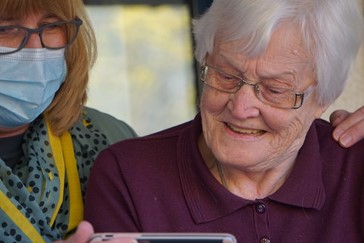
Physical therapy is an integral component of post-acute care, helping to restore function, reduce pain, and prevent future injuries. Traditional methods require in-person visits, which may be difficult for those with limited mobility, those who live in rural areas and those with a lack transportation options. But thanks to advances in telehealth and virtual rehabilitation technologies, John R. Callen of Joint & Neuro Rehab Associates explains that patients now have access to cutting-edge methods of physical therapy that could revolutionize this field forever.
Physical Therapy Through Telehealth
Telehealth is the use of electronic communication technologies to deliver healthcare remotely. In physical therapy, this may include video conferencing, telephone consultations, or messaging apps that enable patients to stay in contact with their therapists and receive guidance, support, and feedback on exercises and progress.
According to McKinsey & Company, utilization of telehealth services peaked at 78 times pre-COVID levels in April 2020 and has since stabilized at about 38 times pre-COVID levels. This has not only provided patients with a convenient and secure option during their crisis but also proven cost-effective: patients save on transportation fees, and the Duke Clinical Research Institute found that healthcare providers saved over $2,700 per patient through physical therapy via telehealth, compared with in-person visits.
Virtual Reality Rehabilitation in Physical Therapy
Virtual reality (VR) rehabilitation is the use of interactive computer programs and devices that create realistic environments, activities, and movements to aid functional recovery and develop motor skills. VR can be utilized in a variety of settings, such as clinics, hospitals, or patients’ homes, to target different aspects of physical therapy, like balance, coordination, strength, or cognition.
Research has demonstrated the efficacy of VR therapy. A study published in NeuroEngineering and Rehabilitation demonstrated that stroke patients who received VR training along with traditional physical therapy experienced greater improvements in arm function compared to those receiving only traditional physical therapy. A meta-analysis of studies on VR rehabilitation for adults with Parkinson’s disease found that VR training resulted in greater improvements in step and stride length, balance, and mobility than conventional rehabilitation training.

Telehealth and VR is Transforming Healthcare
Telehealth and VR have had a profound effect on healthcare. Patients now have more options for receiving care, leading to improved patient outcomes. Furthermore, being able to receive care from home has reduced the burden on healthcare facilities, freeing up resources for other patients who require in-person attention.
According to a study published in the Physical Therapy & Rehabilitation Journal, the proportion of physical therapists who used telehealth services grew from under 5% before the beginning of the COVID-19 pandemic to 50% one year later. This has been beneficial not only for patients but also for healthcare providers. According to another study published in the Annals of Medicine, the implementation of telehealth services led to 13% fewer missed appointments, particularly among patients with chronic illnesses or numerous doctor appointments.
Conclusion
Telehealth and VR rehabilitation are cutting-edge methods of physical therapy that have the potential to transform this field. The adoption of telehealth and VR technology has resulted in improved patient outcomes and reduced healthcare costs and was especially useful during the COVID-19 pandemic. As technological progress continues to accelerate, these advances will continue to benefit physical therapy services around the world.



